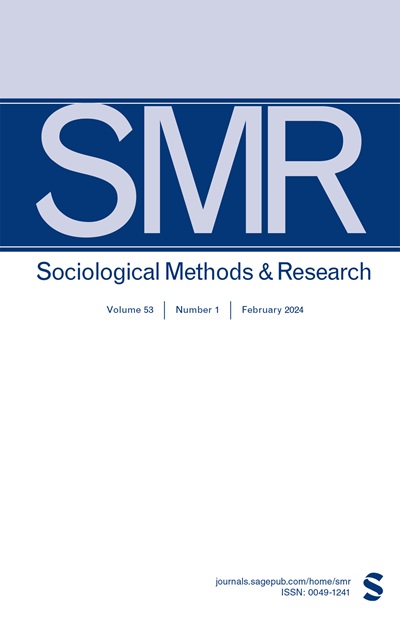视频数据分析与警用人体摄像镜头
IF 6.5
2区 社会学
Q1 SOCIAL SCIENCES, MATHEMATICAL METHODS
引用次数: 2
摘要
视频数据分析(VDA)代表了当代研究方法的重要方法框架,用于从相机,设备和电话中获得的无数镜头。警用随身摄像机(BWCs)的录像有望成为社会科学研究人员审查警察与公民之间互动的广泛可用平台。我们基于对从该平台获得的音频和视频质量的评估,在VDA背景下研究与生物武器相关的有效性和可靠性问题。其次,我们比较了从警察-公民遭遇样本中获得的生物武器录像的编码与现场编码器使用现场系统社会观察(SSOs)改编的工具对相同事件的编码。调查结果表明,在作为社会科学调查数据来源的《生物武器公约》录像中存在大量和系统的音频和视频缺口,这可能会影响措施的可靠性。尽管存在这些问题,《生物武器公约》的数据在判断连续发展、因果顺序和事件持续时间方面具有很大的能力。因此,这项技术应该打开那些对于亲自观察来说过于繁琐的理论框架。根据VDA的理论发展被认为是未来研究人员在从BWCs收集框架数据方面的重要途径,也建议了三角测量必不可少的领域。本文章由计算机程序翻译,如有差异,请以英文原文为准。
Video Data Analysis and Police Body-Worn Camera Footage
Video data analysis (VDA) represents an important methodological framework for contemporary research approaches to the myriad of footage available from cameras, devices, and phones. Footage from police body-worn cameras (BWCs) is anticipated to be a widely available platform for social science researchers to scrutinize the interactions between police and citizens. We examine issues of validity and reliability as related to BWCs in the context of VDA, based on an assessment of the quality of audio and video obtained from that platform. Second, we compare the coding of BWC footage obtained from a sample of police-citizen encounters to coding of the same events by on-scene coders using an instrument adapted from in-person systematic social observations (SSOs). Findings show that there are substantial and systematic audio and video gaps present in BWC footage as a source of data for social science investigation that likely impact the reliability of measures. Despite these problems, BWC data have substantial capacity for judging sequential developments, causal ordering, and the duration of events. Thus, the technology should open theoretical frames that are too cumbersome for in-person observation. Theoretical development with VDA in mind is suggested as an important pathway for future researchers in terms of framing data collection from BWCs and also suggesting areas where triangulation is essential.
求助全文
通过发布文献求助,成功后即可免费获取论文全文。
去求助
来源期刊

Sociological Methods & Research
Multiple-
CiteScore
16.30
自引率
3.20%
发文量
40
期刊介绍:
Sociological Methods & Research is a quarterly journal devoted to sociology as a cumulative empirical science. The objectives of SMR are multiple, but emphasis is placed on articles that advance the understanding of the field through systematic presentations that clarify methodological problems and assist in ordering the known facts in an area. Review articles will be published, particularly those that emphasize a critical analysis of the status of the arts, but original presentations that are broadly based and provide new research will also be published. Intrinsically, SMR is viewed as substantive journal but one that is highly focused on the assessment of the scientific status of sociology. The scope is broad and flexible, and authors are invited to correspond with the editors about the appropriateness of their articles.
 求助内容:
求助内容: 应助结果提醒方式:
应助结果提醒方式:


